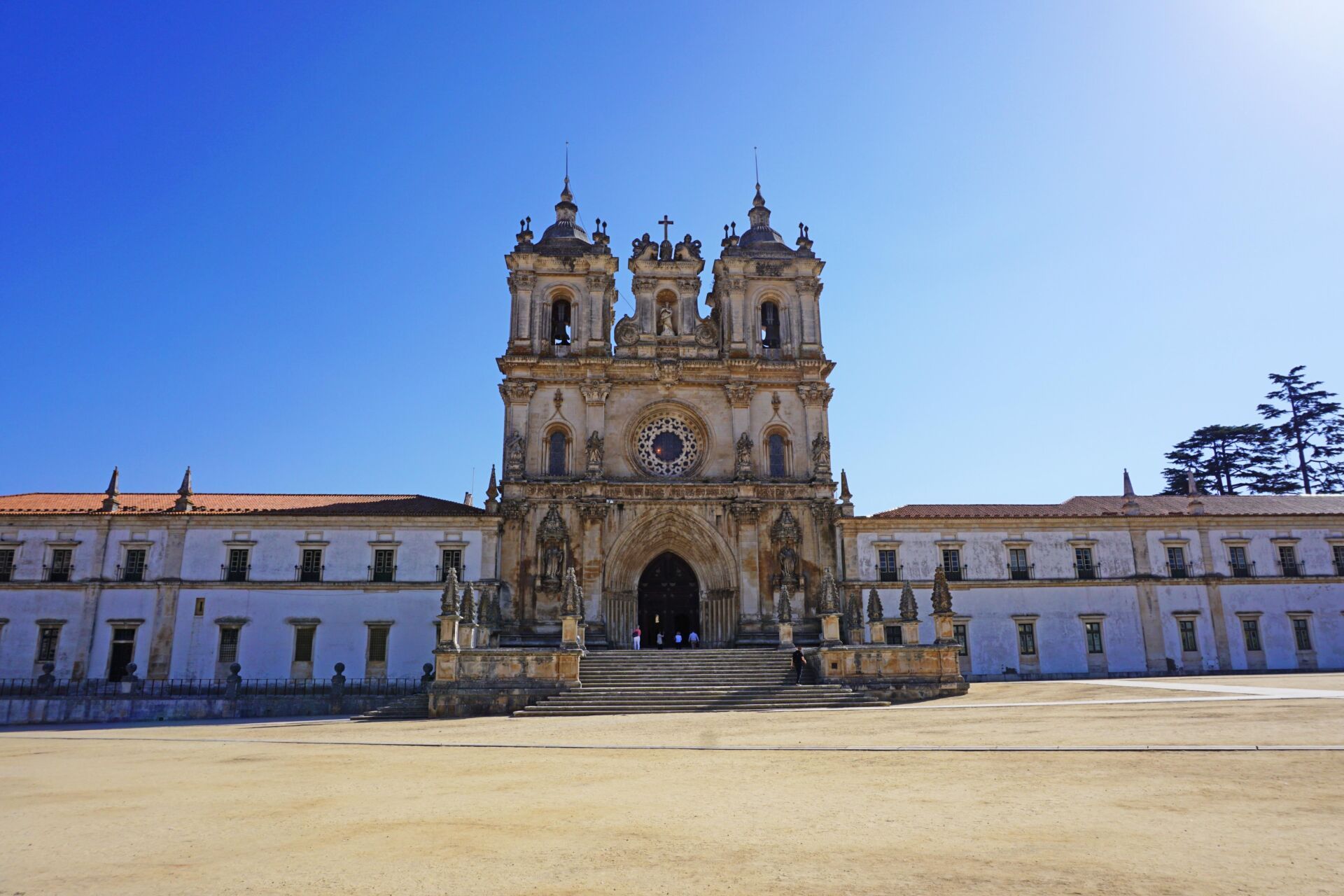The Mosteiro de Alcobaça, or the Alcobaça Monastery, has drawn visitors from near and far for nearly 800 years. This UNESCO World Heritage site is one of the most iconic buildings in Portugal and can be found only a 90-minute drive from Lisbon. If you enjoy visiting old buildings and haven’t been to this one yet, here’s a peek of what’s inside – it might just tempt you to make the short trip out there.
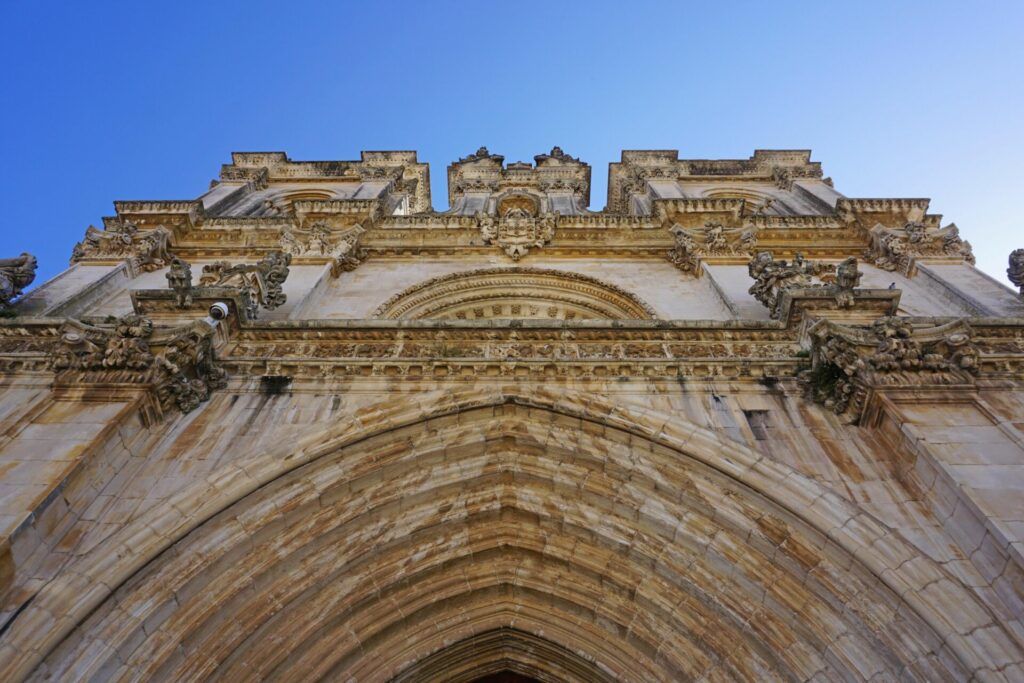
The Alcobaça Monastery was built to strengthen the Christian presence towards the Tagus River, as the Portuguese kingdom expanded its territory southwards. Construction began in 1178. The monastery part of the building was completed in 1223 and the church in 1252. Together, these two structures represented the first Gothic architecture in Portugal… and what an impressive example of such architecture, if I might add! The ornate facade of the church is adorned with sculpted angels, patterns, flowers, and even the Portuguese crest. Some of these elements were only added in the early 18th century, but you’d never know it from looking at it.
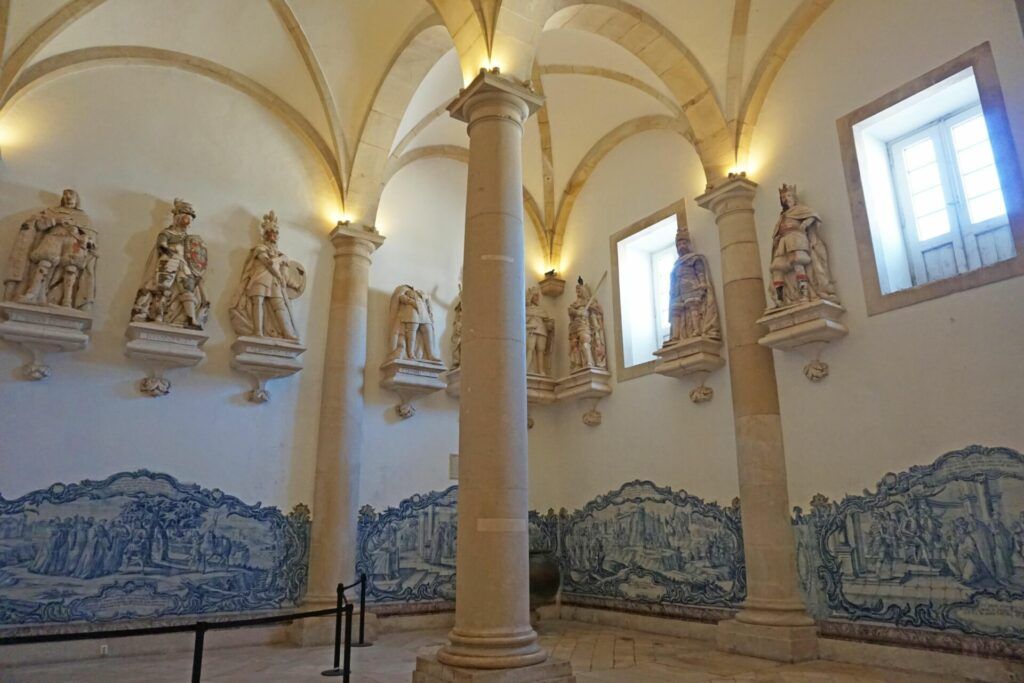
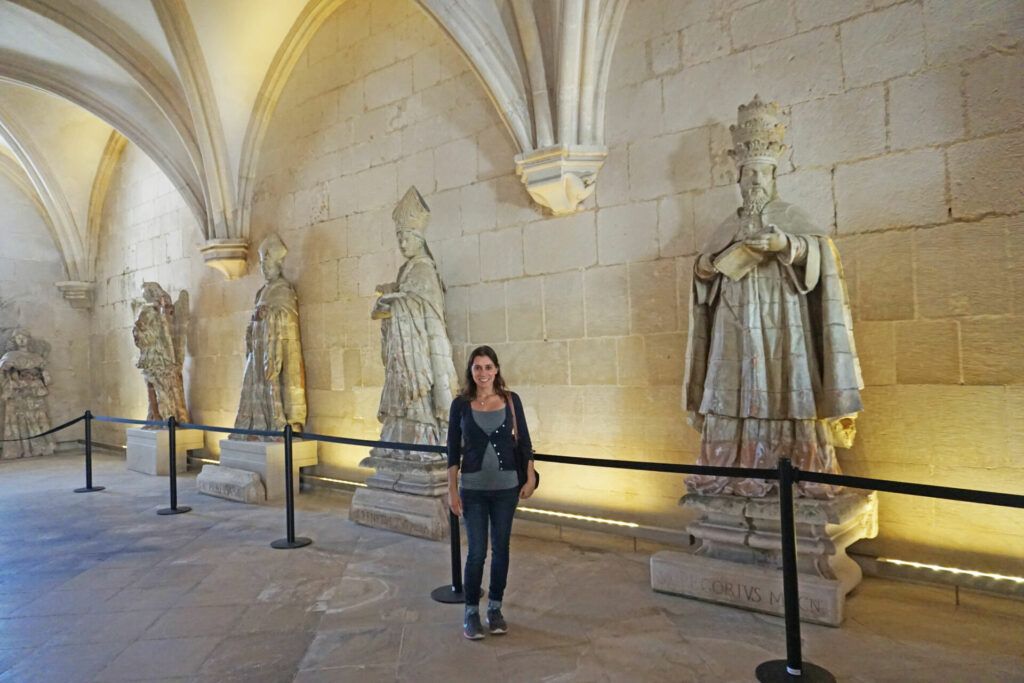
The monastery is so long that I couldn’t actually capture the entire building in a single photo frame. But don’t let this intimidate you: you can see the inside of the Mosteiro de Alcobaça in about an hour. Unlike some other historic buildings you may visit, this one is unfurnished. You’ll have to use your imagination to understand how the inside would’ve looked centuries ago when it was inhabited, but the bare rooms make the architectural details and the dimensions of the space very obvious.
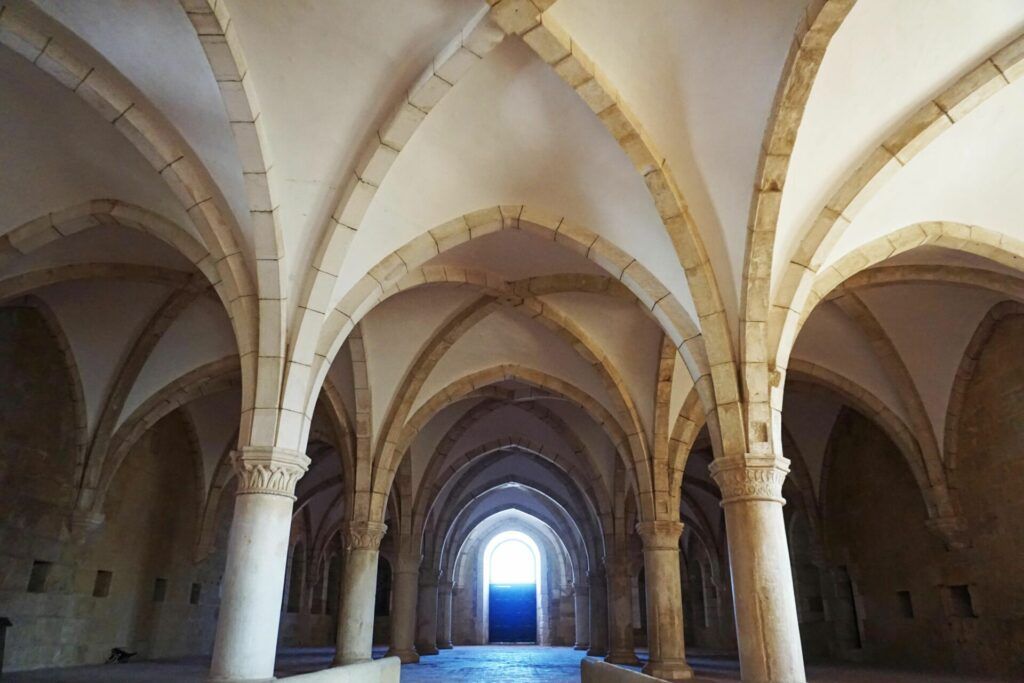
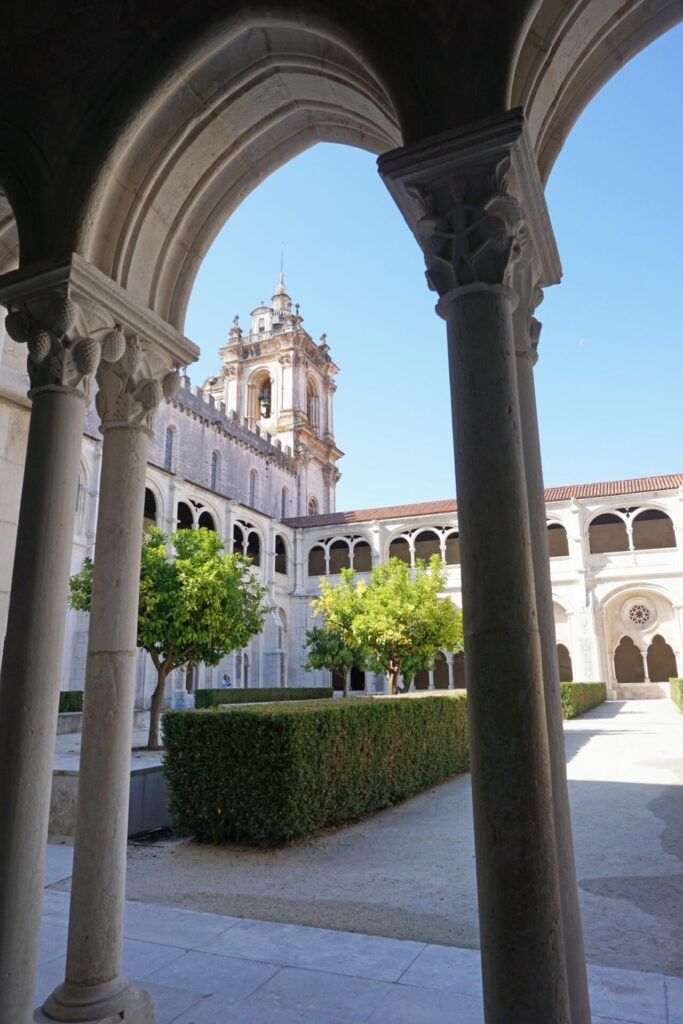
One of my favorite elements in the building are the arches the line the courtyards. They match the arched ceilings of the many of rooms of the monastery and those of the church. Everything ties in together beautifully.
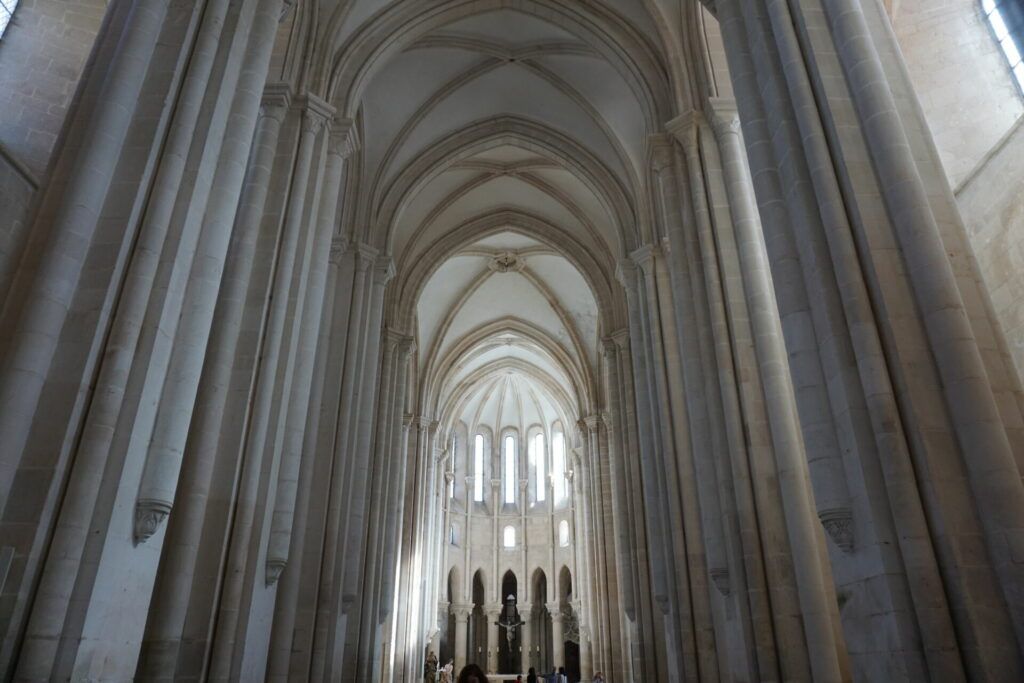
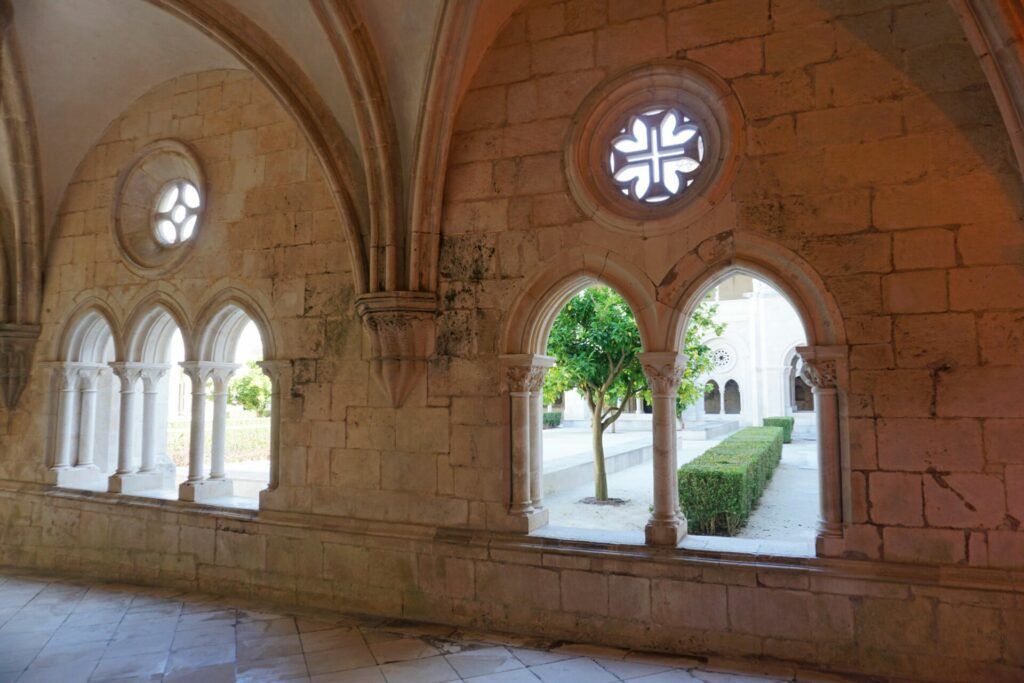
One room that (to me at least) really stood out – not because it was opulent or ornate, but because it was so different to the rest of the monastery and church – was the kitchen. It featured a giant chimney in the center of the room that is held up by eight columns. The chimney is not only wide, it’s incredibly tall. In fact, the entire room is. But most unique of all is that everything bit of the room and the endless walls are covered in tiles. Yes, most of them are plain white tiles, but its simplicity carries its own charm. At the end of the kitchen is a large fountain area where fresh water from the nearby river was diverted to provide drinking water to the monastery’s residents.

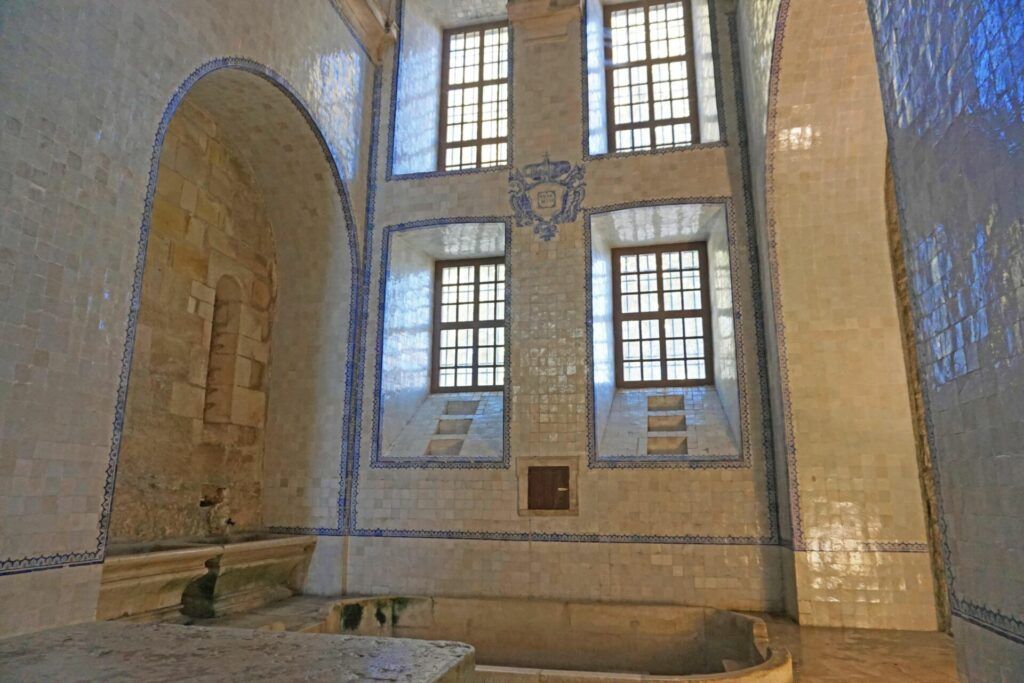
One of the greatest claims to fame of the Alcobaça Monastery, is that it’s the resting spot of Pedro and Inês, possibly Portugal’s greatest love story. The church remains the largest in the country. Visitors to the church will find two elaborately-decorated tombs: one for each of the lovers. Because the tombs are so tall, you won’t be able to see the tops properly unless you’re looking down from the second floor window that opens up to the church (this second floor was an addition made during the reign of King Manuel I during the early 16th century.
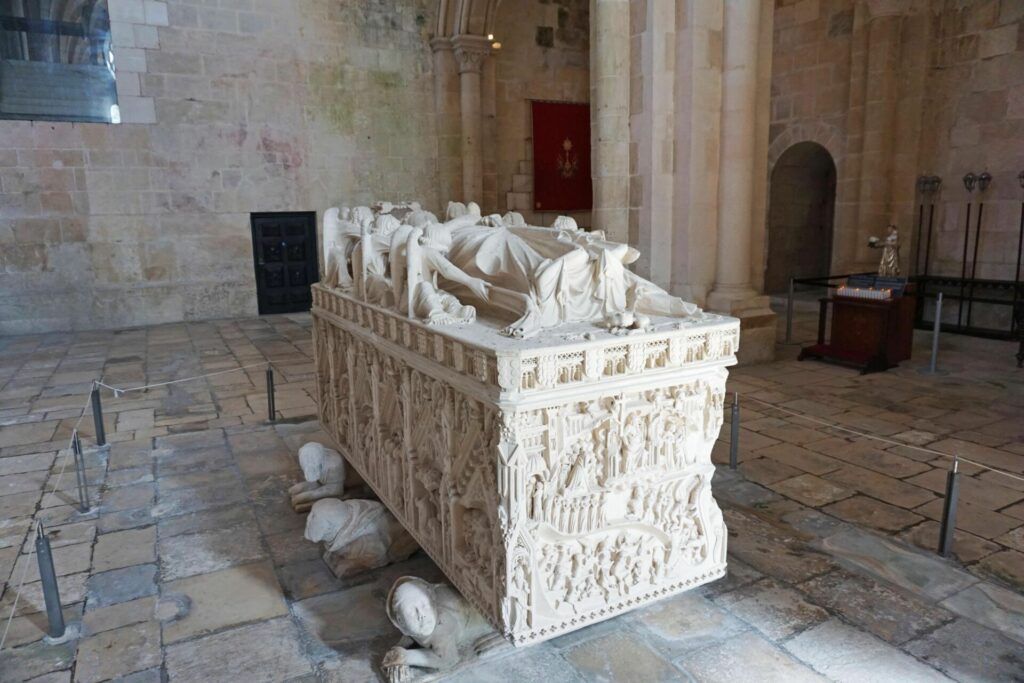
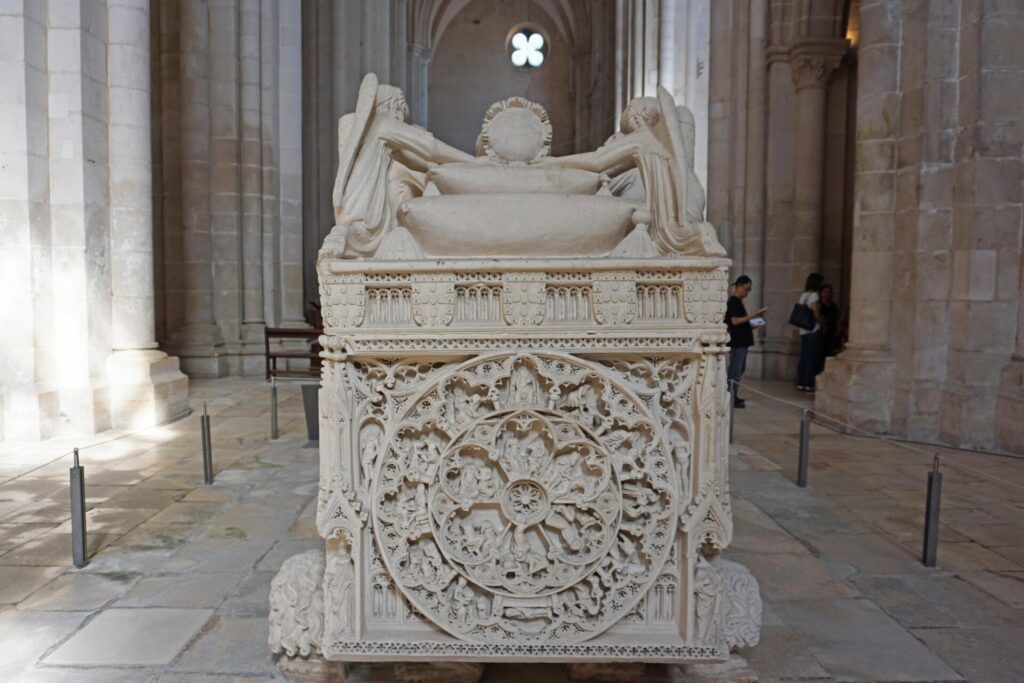
The decor within church itself is simple, as was typical of Cistercian churches. Nevertheless, the incredibly high walls give it a sense of grandeur that might otherwise be achieved through gold embellishments or large oil paintings that you often find in other Portuguese churches. At the end of the church (in the elegantly tiled Manueline vault) you will find the entrance to the sacristy. It was locked when I went, so I took a sneaky photo through the keyhole, especially for my readers.
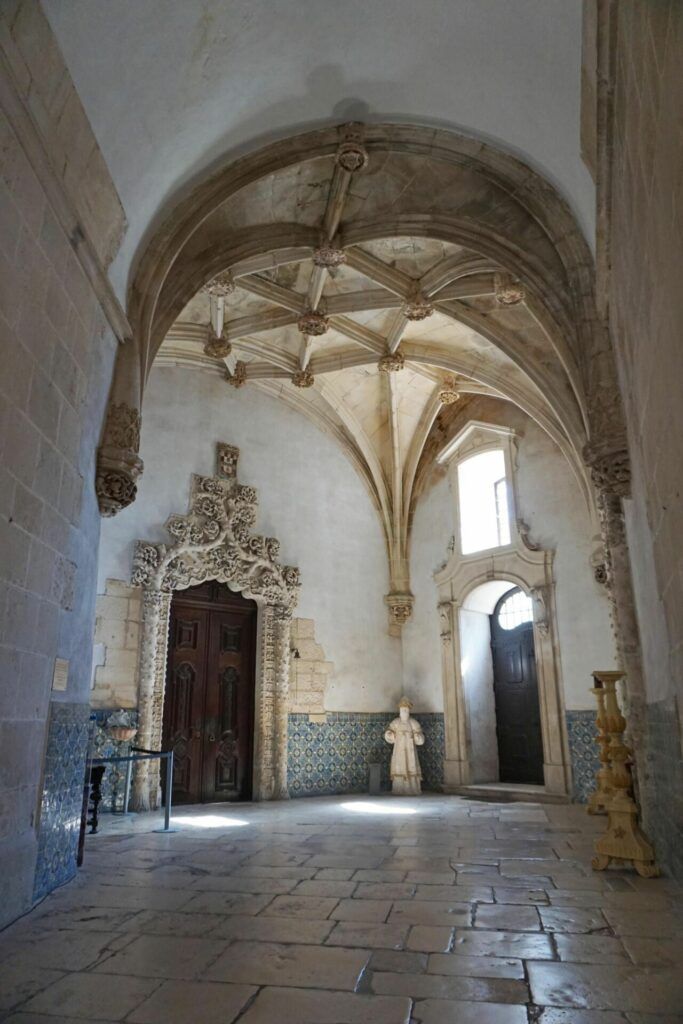
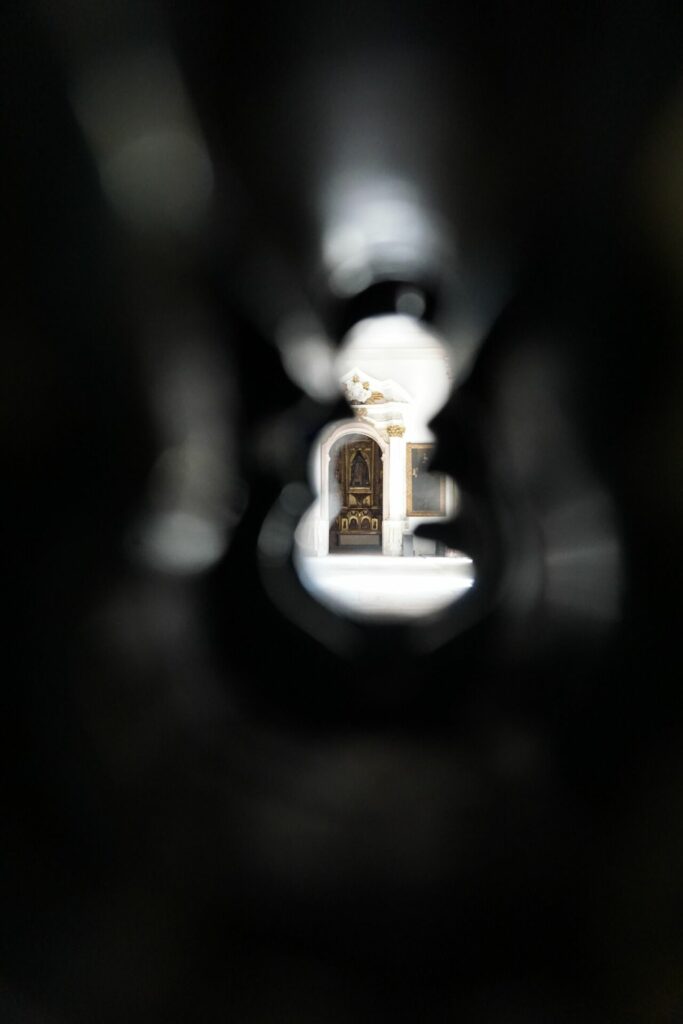
Just remember: sightseeing is hard work, so be sure to treat yourself to a delicious meal at Restaurante António Padeiro after you’re done exploring the Monastery. You won’t regret it!
